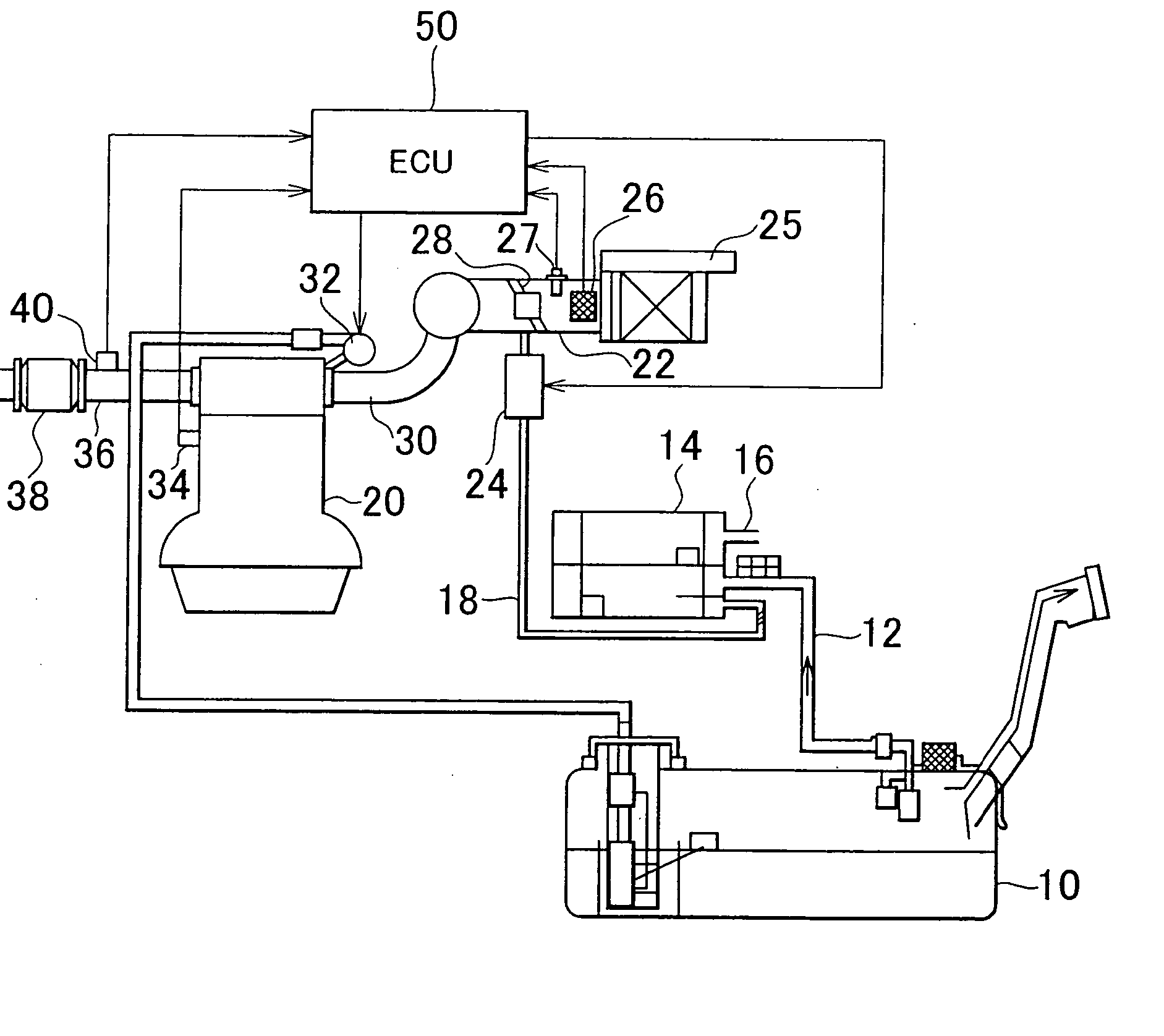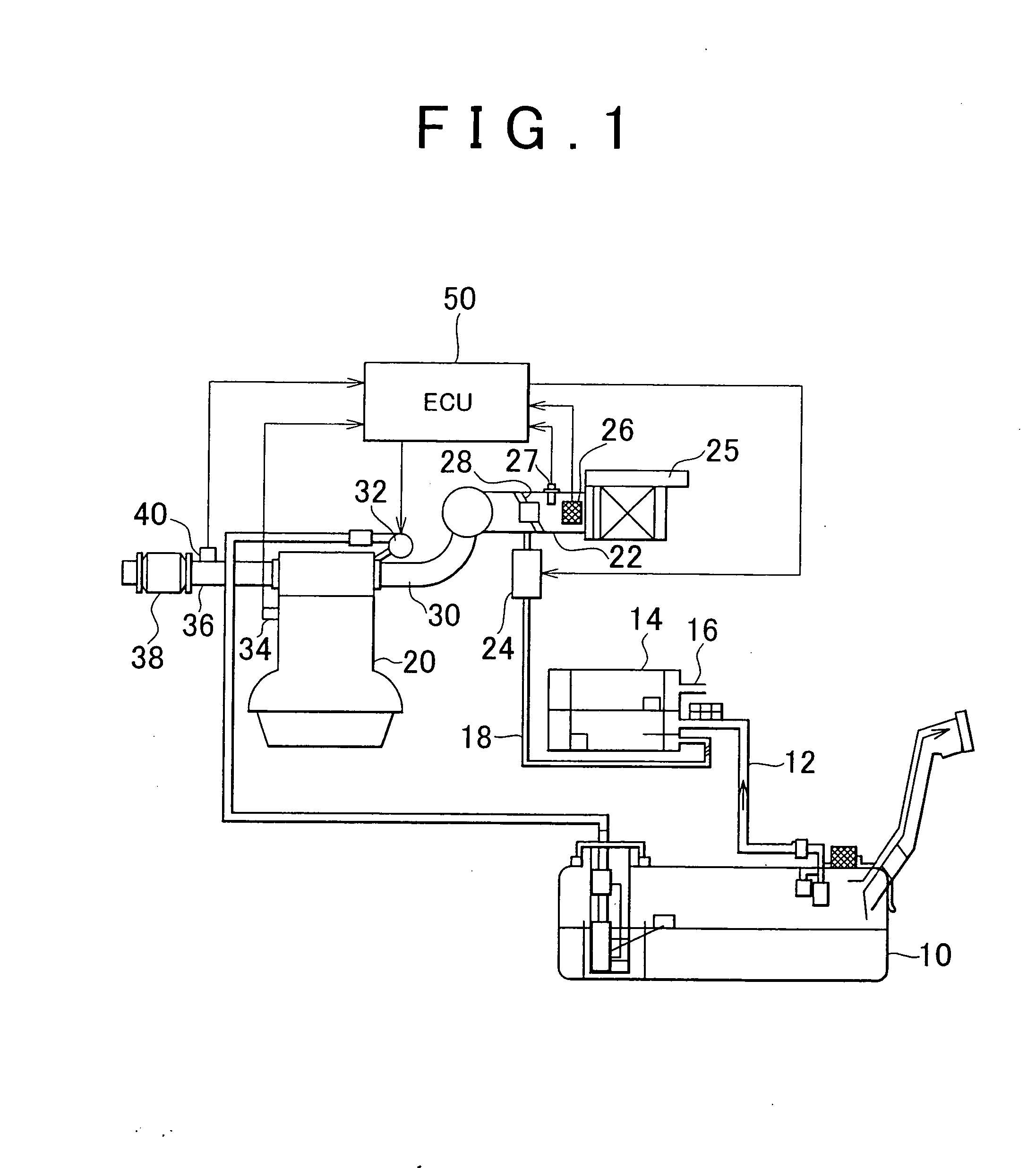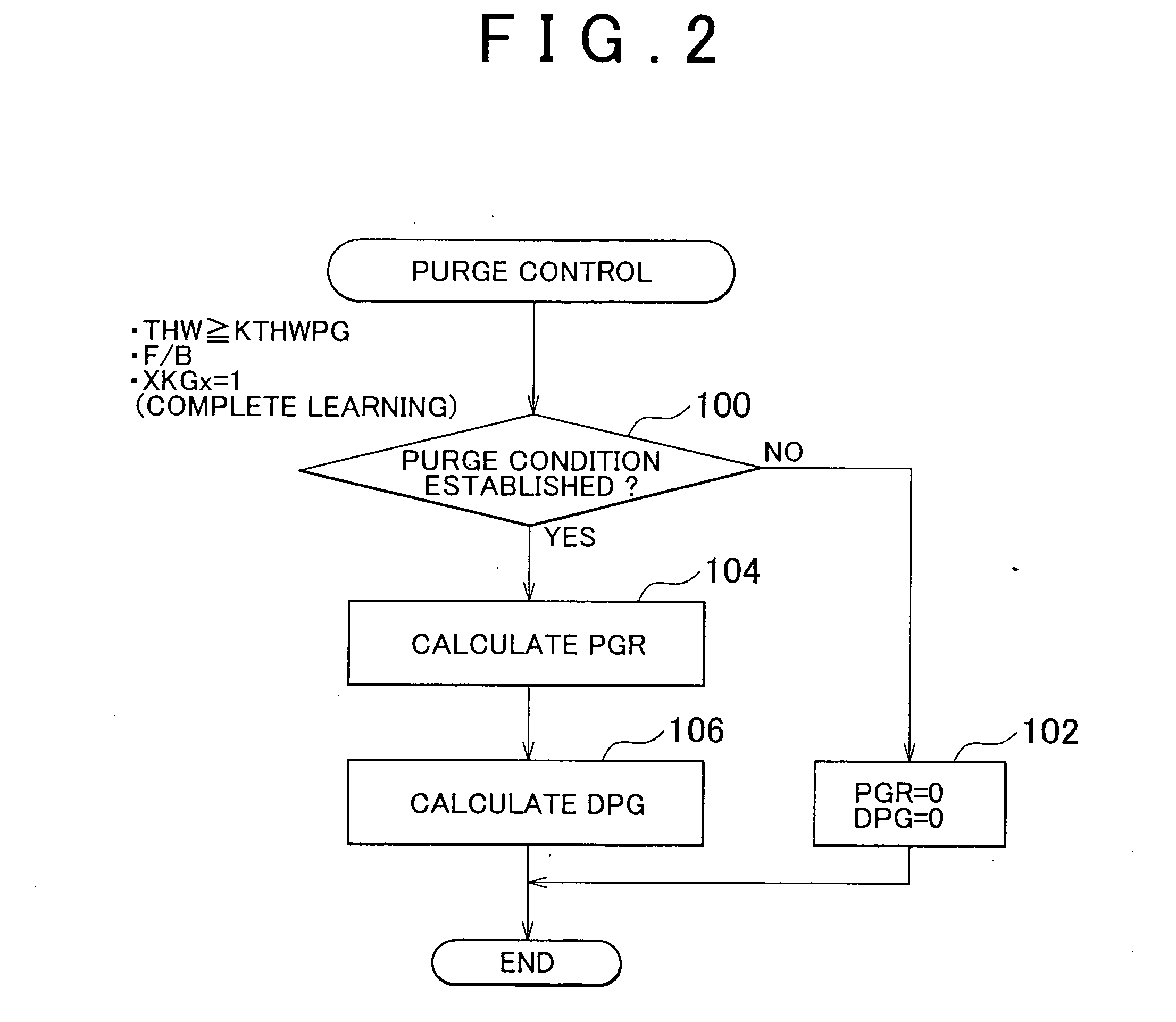Vaporized fuel purge system
a technology of vaporized fuel and purge gas, which is applied in the direction of combustion air/fuel air treatment, electric control, machines/engines, etc., can solve the problems of excessive current fuel concentration, and inability to maintain constant fuel concentration of purge gas
- Summary
- Abstract
- Description
- Claims
- Application Information
AI Technical Summary
Benefits of technology
Problems solved by technology
Method used
Image
Examples
first embodiment
[0048] First Embodiment
[0049]FIG. 1 shows a structure of a first embodiment of the invention. A vaporized fuel purge system includes a fuel tank 10 communicated with a canister 14 through a vapor passage 12. The canister 14 is provided with an air inlet 16, and communicated with an intake air passage 22 of an internal combustion engine 20 via a purge passage 18. The canister 14 contains activated carbon for adsorbing the vaporized fuel generated within the fuel tank 10.
[0050] The purge passage 18 is provided with a purge control valve 24 which controls a flow rate of gas flowing therethrough. The purge control valve 24 is duty controlled to a desired opening degree.
[0051] The intake air passage 22 is provided with an air cleaner 25 at its one end, and both an airflow meter 26 for detecting an intake air amount Ga and an intake air temperature sensor 27 for detecting an intake air temperature THA are provided downstream of the air cleaner 25. The intake air passage 22 is also provi...
second embodiment
[0126] Second Embodiment
[0127] The second embodiment of the invention will be described referring to FIG. 7. In the second embodiment, the system according to the first embodiment is employed such that the ECU 50 executes the routine shown in FIG. 7 instead of the one shown in FIG. 6.
[0128] In the first embodiment, the possibility of sharp changes in the fuel concentration is determined based on the fuel concentration of purge gas. However, in the case where the internal combustion engine 20 is started in a sufficiently warm state, a large amount of vaporized fuel has been already generated within the fuel tank 10 so as to be supplied to the canister 14. Accordingly, the fuel concentration of purge gas hardly decreases during purging.
[0129] In the system according to the second embodiment, a determination is made whether the internal combustion engine 20 has been warm-started or cold-started. If it is determined that the engine 20 has been cold-started, the vapor concentration cor...
third embodiment
[0137] Third Embodiment
[0138] The third embodiment of the invention will be described referring to FIG. 8. In the third embodiment, the system according to the first or the second embodiment is employed such that the ECU 50 executes the routine shown in FIG. 8 instead of steps 130, 132 and 136 of FIGS. 6 and 7.
[0139] In the first or the second embodiment, the time the fuel cell concentration of purge gas converges to a specific level, i.e., the time a sharp decrease in the fuel concentration of purge gas ends, is estimated based on the total purge time (updating count tCFGPG). Meanwhile in the third embodiment, the convergence timing can be estimated further accurately based on the temperature of the internal combustion engine 20 or the total purge amount, as will be described below.
[0140] As aforementioned, the fuel concentration of purge gas sharply decreases temporarily as purging proceeds, and thereafter converges to a specific level. This convergence timing is correlated with...
PUM
 Login to View More
Login to View More Abstract
Description
Claims
Application Information
 Login to View More
Login to View More - R&D
- Intellectual Property
- Life Sciences
- Materials
- Tech Scout
- Unparalleled Data Quality
- Higher Quality Content
- 60% Fewer Hallucinations
Browse by: Latest US Patents, China's latest patents, Technical Efficacy Thesaurus, Application Domain, Technology Topic, Popular Technical Reports.
© 2025 PatSnap. All rights reserved.Legal|Privacy policy|Modern Slavery Act Transparency Statement|Sitemap|About US| Contact US: help@patsnap.com



